18 Minutes
Porsche beyond the 911 myth
Porsche is synonymous with a specific automotive scripture. The 911 epitomizes continuity, rear engines, and a design language that evolves so gradually it feels inevitable. Yet beneath that disciplined public face lies an archive full of experiments, visual detours, and engineering gambles. These are the prototypes and concept cars that never made production but reveal a different side of Stuttgart: risk taking, playful design, and projects that tested the brand's identity. In this longform guide we examine the most surprising and unusual Porsche concept cars, explain their technical details, evaluate how they performed on paper, and assess their real legacy for the Porsche we know today. Keywords such as Porsche concept cars, Porsche prototypes, and Porsche design appear naturally across this article to help enthusiasts find insights about these rare machines.
Why these concepts matter
Porsche concept cars are more than oddities for coffee table books. They function as internal thought experiments, probing new segments, packaging layouts, and aesthetic possibilities. Some were moonshots that influenced future production models, while others served as design studies or bids for new markets. They also show how an engineering-driven company negotiates commercial reality. Examining these cars gives perspective on Porsche's modern line up, from the Panamera to the Taycan and the Cayenne. The following chapters explore five particularly memorable concepts: the 1970 Tapiro, the 1987 928 Studie H50, the 1988 989, the 1995 C88, and the 2018 Vision Renndienst.
How this article is organized
Each concept gets a focused section covering design, technical specifications, performance, market positioning, and comparisons to production cars. The goal is to provide a complete, SEO-optimized resource for car enthusiasts, historians, and anyone curious about Porsche prototypes and their influence on modern sports cars and luxury vehicles.
1970 Porsche Tapiro: the wedge that almost rewrote the brand
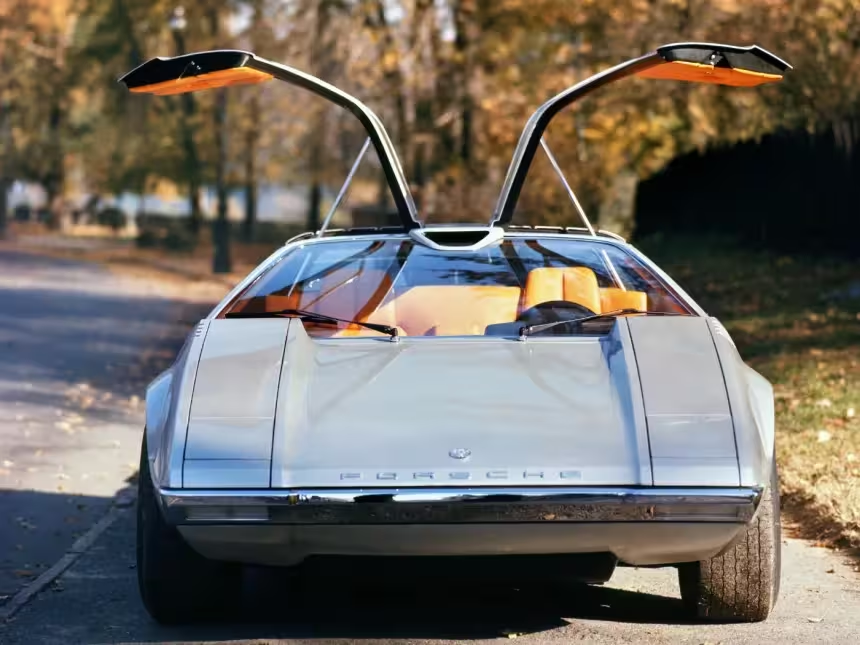
Design and origin
The Tapiro is the kind of concept that reads like a cross-cultural design exercise. Born from a collaboration with Giorgetto Giugiaro and Italdesign, the Tapiro grafted an extreme Italian wedge aesthetic onto a Porsche chassis. It was based on the 914/6 platform, but the sheetmetal transformed the compact mid-engine layout into a low, dramatic wedge complete with gullwing doors. This was Giugiaro at the height of his wedge era, and Porsche allowed the experimentation as a rare deviation from Stuttgart's usual conservative design philosophy. The Tapiro was an attempt to see how a Porsche could look and behave if it borrowed more overtly from Italian styling.
Vehicle specifications
Engine and drivetrain
- Platform: Porsche 914/6 underpinnings
- Engine: 2.4 liter flat-six
- Power output: approximately 220 horsepower
- Layout: mid-engine, rear-wheel drive
Chassis and dimensions
- Body: low-slung wedge coupe with gullwing doors
- Weight and exact dimensions: bespoke coachbuilt prototype values typical of late 1960s concept builds
Performance
- Estimated 0 100 kph acceleration: competitive for early 1970s sportscars, not a high-performance outlier
- Top speed: in line with its power output and aero, but the primary emphasis was on styling rather than outright performance
Practicality and design tradeoffs
Gullwing doors and extreme wedge geometry made the Tapiro impractical for everyday use. Ground clearance, ingress and egress, and visibility were typical concept compromises. The project prioritized dramatic styling and brand experimentation over production feasibility. That said, the mid-engine layout of the donor 914/6 meant that the underlying mechanical architecture was reliable, which made the Tapiro more than just a clay model.
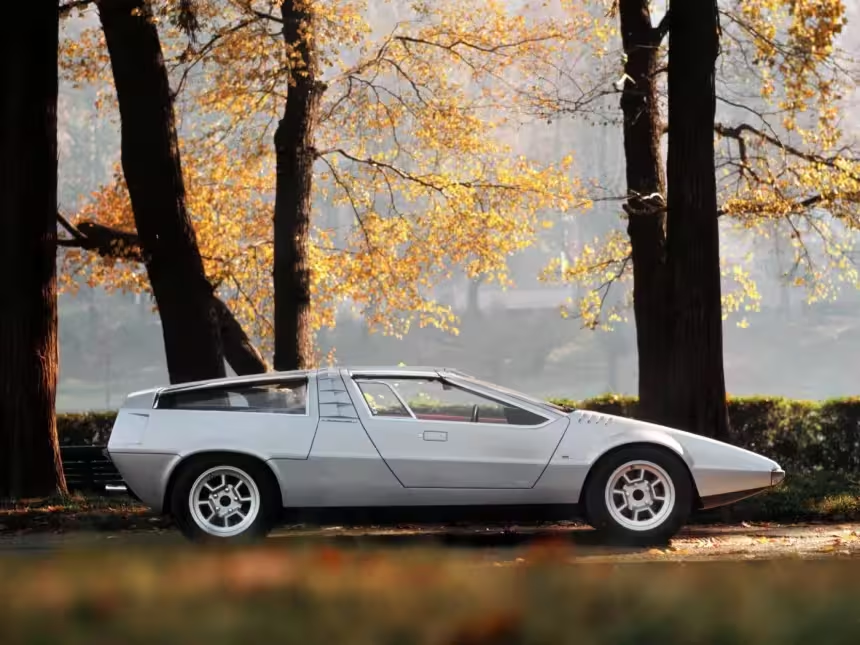
Market positioning and comparison
The Tapiro was never intended for mass-market acceptance. Instead it was a statement: what would Porsche look like if it fully embraced exotic Italian design? Compared to contemporary production models such as the 911 and the 914, the Tapiro sits at the opposite end of the design spectrum. It was stylistically closer to Italian supercars like the De Tomaso Pantera than to anything in the Stuttgart stable.
Legacy and cultural impact
The Tapiro represents a visual what-if. The single prototype generated curiosity and controversy, and its dramatic end only added to the legend. Reports indicate that the car changed hands and had a violent finale in Spain, after which Italdesign preserved the charred shell in its museum. The car never influenced production visually in a direct way, but it stands as an example of Porsche's willingness to consult outside designers and temporarily shed its conservative skin.
1987 Porsche 928 Studie H50: a stretched four door experiment
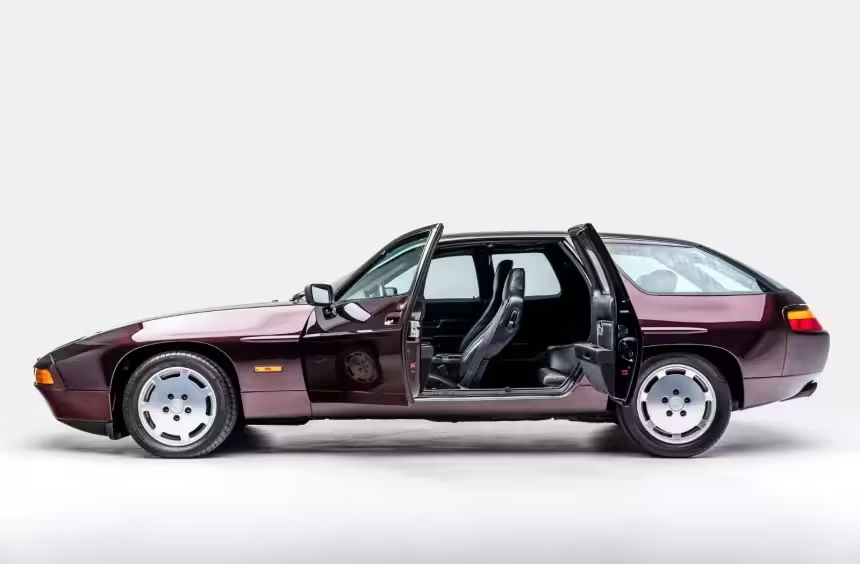
Concept and rationale
The 928 was Porsche's attempt to move into the front-engined, V8-powered grand touring territory, a design and engineering departure from the rear-engined 911. The Studie H50 was an internal experiment to explore a four-door sports car long before the market embraced such vehicles. Rather than develop a new platform, Porsche modified an existing 928 S4, stretching the wheelbase and adding rear-hinged doors. This pragmatic prototyping tested the feasibility of combining sports GT geometry with additional passenger access.
Vehicle specifications
Engine and drivetrain
- Donor: Porsche 928 S4
- Engine: 5.0 liter V8
- Power output: around 320 horsepower
- Transmission: transaxle with an automatic gearbox
- Layout: front-engine, rear-wheel drive (transaxle layout)
Chassis and dimensions
- Wheelbase: increased by 25 centimeters compared to production 928
- Doors: four door layout with rear-hinged rear doors and no B-pillar
- Weight: increased over standard 928 due to lengthening and additional structure
Performance
- 0 100 kph: under 6 seconds claimed for the prototype configuration
- Handling: compromised relative to the coupe due to increased weight and altered wheelbase
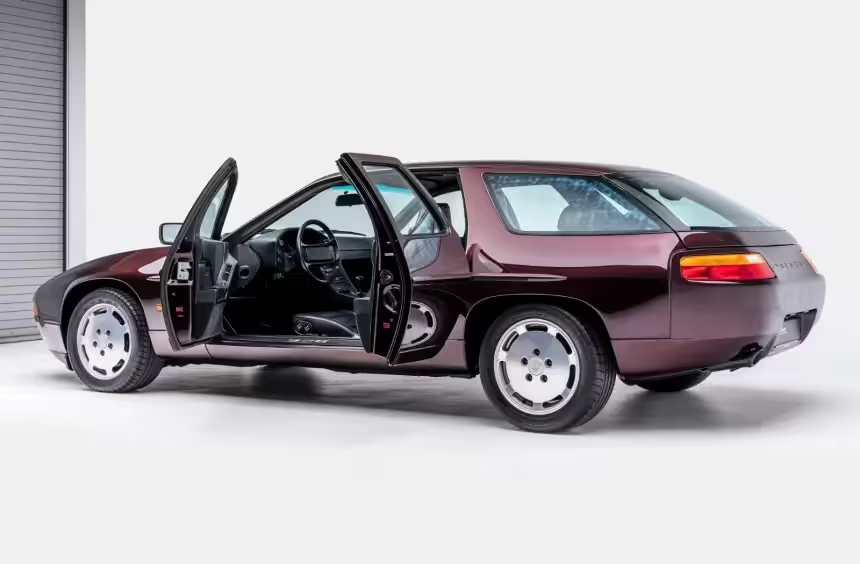
Design considerations and safety tradeoffs
Removing the B-pillar to create an uninterrupted opening was a dramatic styling choice, but it introduced structural and crash safety challenges that would be difficult to resolve without significant reengineering. The rear-hinged doors were elegant visually, but their small size made ingress and egress awkward. The H50 highlighted early attempts to reconcile sports car dynamics with four-door convenience, and it underscored the engineering compromises that occur when a manufacturer converts an existing platform rather than designing one from scratch.
Market positioning and comparisons
In the late 1980s, Mercedes and BMW dominated the high-end sedan market. Porsche considered entering that arena but faced financial and technical constraints. The H50 can be read as an early prototype of a true four-door Porsche, decades ahead of the Panamera. Comparatively, the H50 had a harsher compromise in packaging and dynamics than later Porsche four-door models, which were designed from the ground up with target markets in mind.
Why it mattered
Although the Studie H50 never reached production, it signaled an important internal conversation. Porsche engineers were exploring how to extend brand performance into more practical body styles. The H50 helped inform future decisions, even if only by demonstrating which compromises were unacceptable. It is a tangible link between the 928 era and the eventual four-door models that would transform Porsche's commercial fortunes.
1988 Porsche 989: the near-miss that presaged the Panamera
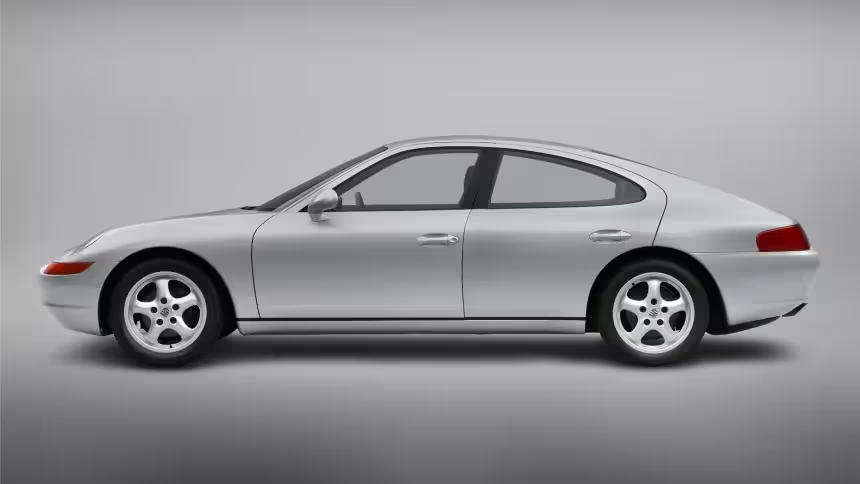
Overview and intent
The 989 was a serious attempt to create a production-grade four-door Porsche. Unlike the H50, which was a modified 928, the 989 was designed as a dedicated sedan concept. The brief was clear: produce a high-performance four-door that could compete with the premium sedans of the day while retaining authentic Porsche driving character. This was a strategic move to enter a profitable market segment dominated by BMW 7 Series and Mercedes S-Class models.
Vehicle specifications
Engine and drivetrain
- Engine: proposed new 3.6 liter V8
- Power output: roughly 300 horsepower expected
- Drivetrain: rear-wheel drive with Porsche-specific suspension tuning
Chassis and dimensions
- Configuration: four-door fastback with long hood and low roofline
- Seating: four full-size seats with a luxury-oriented interior layout
Performance
- Target top speed: around 250 kph (155 mph)
- Driving focus: sports sedan dynamics, designed to balance comfort and handling
Design language and styling cues
The 989 is often cited as a design milestone because it anticipates styling elements that later appeared on Porsche production cars. Its fastback roofline and muscular proportions foreshadow the Panamera. The front and rear treatments contain early hints of design cues that would be refined by the 996 generation 911 and later family vehicles. The 989 therefore functions as a direct ancestor to Porsche's four-door design language.
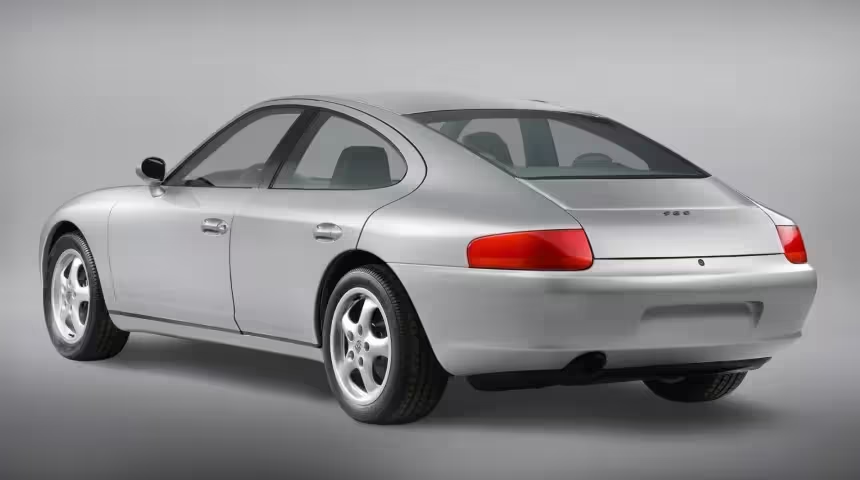
Market strategy and why the project stalled
Porsche started the 989 project at a time when the company faced financial pressure. The early 1990s brought exchange rate challenges and shrinking profits. Building a new platform and launching a premium sedan required capital Porsche did not have. By 1992 the project was shelved and the prototypes were stored. The 989 never reached production, but its design DNA remained influential.
Legacy and comparison to the Panamera
When Porsche finally launched the Panamera in 2009, observers noted clear links back to the 989. The concept demonstrated that Porsche had been thinking strategically about expanding into the four-door market for decades. The Panamera benefited from advances in chassis engineering, global market acceptance of performance sedans, and Porsche's improved financial footing. The 989 can therefore be credited with seeding the ideas that later made the Panamera possible.
1995 Porsche C88: an unlikely entry into the economy car market
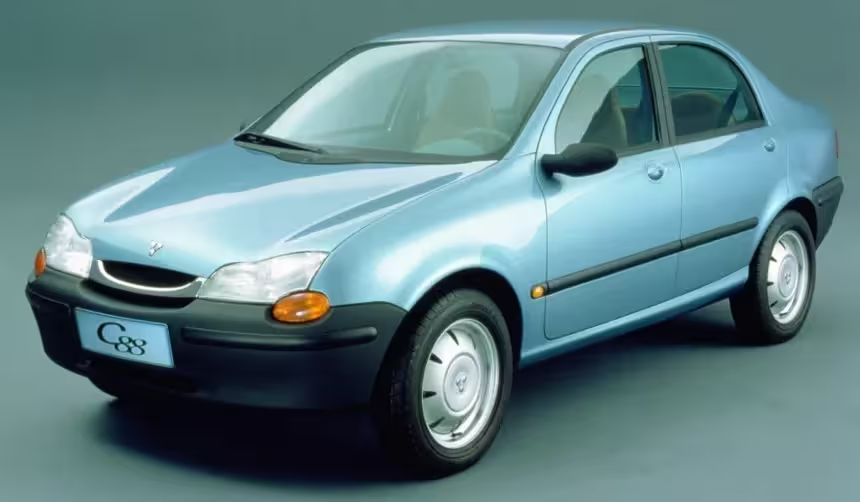
Context and brief
The C88 stands out as perhaps Porsche's most surprising concept. In the mid-1990s Porsche responded to a Chinese government invitation to propose a simple, affordable compact car for local production. The brief demanded low cost, high reliability, and ease of assembly, which pushed Porsche far from its sports car DNA and into small family car territory.
Vehicle specifications
Engine and drivetrain
- Engine: 1.1 liter four-cylinder
- Power output: approximately 55 horsepower
- Layout: front-engine, front-wheel drive or simple rear-wheel variants in prototype testing
Chassis and packaging
- Wheelbase: roughly 100 inches
- Body: three-box compact sedan with seating for five
- Focus: low cost of ownership, simple parts, easy serviceability
Performance
- Urban performance: modest, designed for efficiency and durability rather than speed
- Fuel economy: prioritized in design to match Chinese market demands of the time
Design philosophy and market positioning
The C88 was intentionally anonymous. Porsche downplayed styling to meet the expectations of Chinese consumers and to avoid high production costs. The interior emphasized durability and family-friendly features, with options that included integrated child seats and robust, low-cost materials. The C88 was named to connect directly to China, the C standing for China and 88 for a culturally auspicious number.
Why it did not enter production
Despite a prototype showing at the 1994 Beijing Auto Show, the Chinese government selected alternative partners for local production. The C88 returned to Porsche archives as a reminder that the company explored low-cost segments but ultimately chose a different commercial path. It did, however, demonstrate Porsche engineering versatility and willingness to engage global markets in unconventional ways.
Legacy and lessons
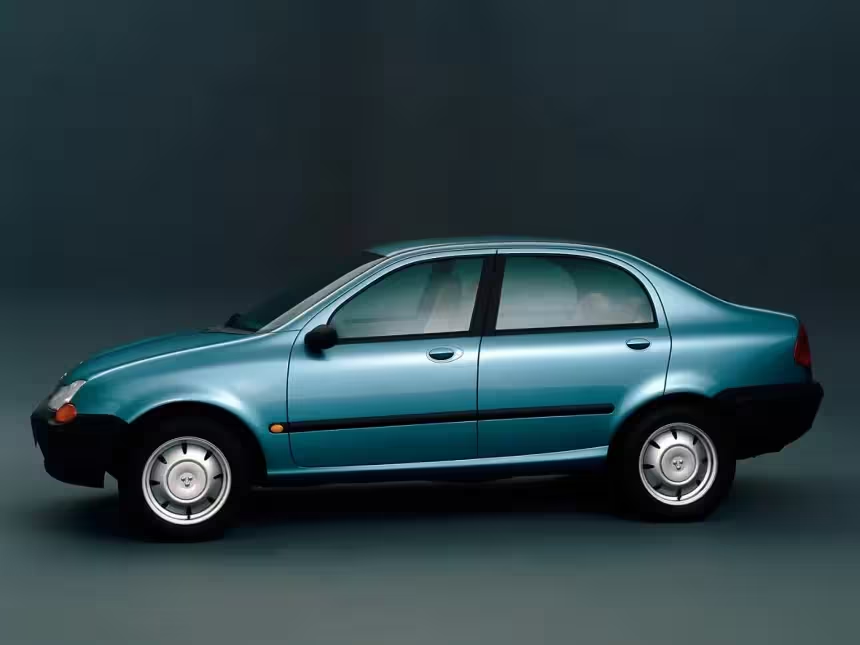
C88 is interesting not because it altered Porsche design or performance priorities, but because it captured an experimental phase. The exercise shaped internal thinking about modular engineering and cost-effective design practices. It also remains a fascinating historical footnote that reveals how Porsche reacted to aggressive globalization and new market opportunities.
2018 Porsche Vision Renndienst: the minivan from Zuffenhausen
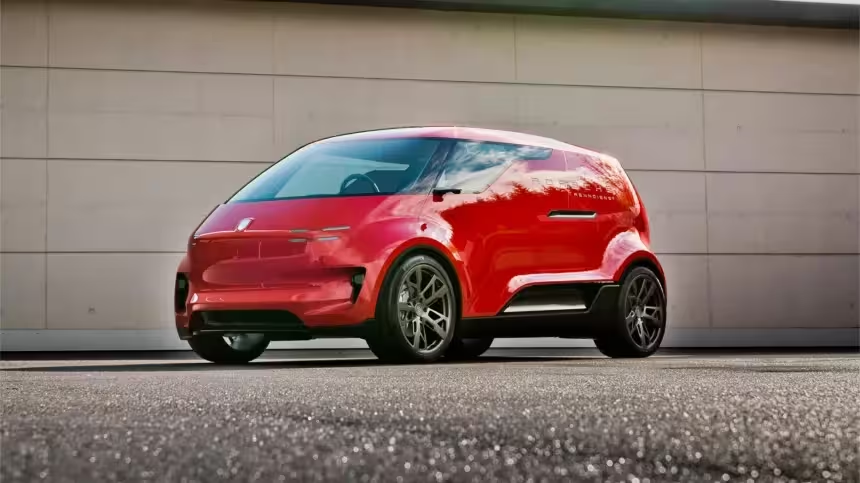
Concept, intent, and the unseen program
The Vision Renndienst is a pure design study from Porsche's internal, largely unseen pool of concepts. Launched in 2018, it was never intended for production. Instead it explored how Porsche might translate its brand language to a people mover or shuttle concept without losing identity. The result is deliberately provocative: a six-seat, all-electric pod with a central driving position in a van-like body.
Vehicle specifications and packaging
Powertrain and platform
- Powertrain: conceptual all-electric architecture, battery and motor specifications not finalized because the car was a design study
- Range and charging: theoretical, focused on urban shuttle missions rather than long-distance travel
Interior and seating
- Configuration: central driving position, two rows of passenger seating behind the driver
- Controls: wraparound digital displays and an interior layout optimized for visibility and serviceability
Exterior design
- A monolithic, minimalist body with full-width light bar and subtle Porsche cues
- Absence of a traditional grille and reliance on sculpted surfaces to convey aerodynamic intent
Performance and operational concept
The Renndienst is not a performance study in the traditional Porsche sense. Its focus is human transport, modular use, and electric vehicle packaging. The central driving seat recalls the McLaren F1 and illustrates Porsche willingness to experiment with driver placement for visibility and presence. As a shuttle, its performance metrics would prioritize energy efficiency, low-speed agility, and passenger comfort.
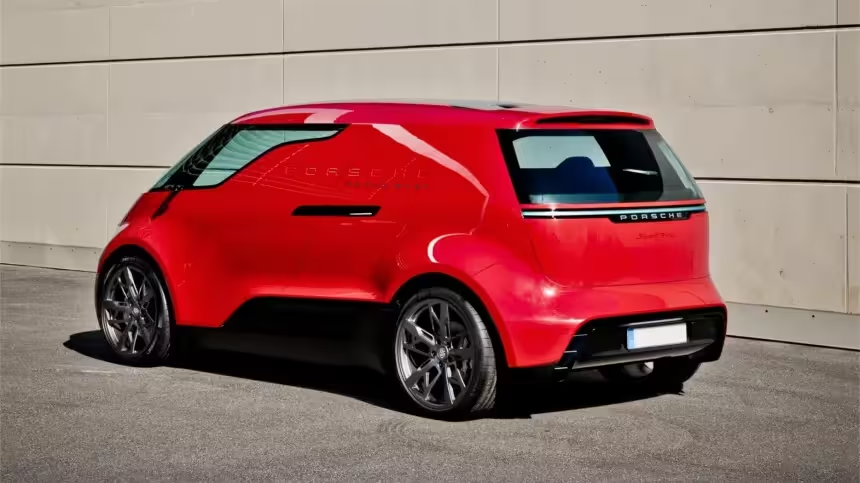
Market positioning and comparisons
Compared with production vehicles, the Vision Renndienst is closer to mobility concepts from tech companies than to Porsche sports cars. It was never meant to compete with conventional minivans. Instead it explores premium urban mobility, autonomous shuttle scenarios, and how the Porsche brand might be translated to a future services economy. In this respect it compares to concept projects from other premium automakers who are investigating mobility-as-a-service and electric shuttle platforms.
Comparative analysis and what these concepts reveal
Design evolution and brand identity
Taken together, these concept cars illustrate Porsche's dual personality. One side is conservative, iterative, and obsessed with the 911 lineage. The other is experimental, daring, and occasionally flamboyant. The Tapiro and Vision Renndienst show the extremes: one borrows heavily from exotic Italian design, the other imagines Porsche as a mobility service provider. The 989 and H50 show incremental but significant shifts toward multi-door, practical performance vehicles. The C88 reveals a tactical, market-driven willingness to depart from high-performance DNA when required.
Engineering tradeoffs and platform thinking
Engineering constraints are common to all these projects. The H50 highlighted the structural challenges of deleting a B-pillar. The 989 underscored the expense of developing a new platform. The C88 emphasized cost and manufacturability over brand cachet. The Renndienst questioned the relevance of driver-centric performance in a future of autonomous mobility. Porsche used prototype platforms and donor components when possible to keep costs down during exploration.
Commercial lessons and eventual production outcomes
Several of these experiments paid off indirectly. The 989 anticipated the Panamera and contributed to the company mindset that four-door sports cars could work. That line of thinking ultimately led to the Panamera and, importantly, to the Cayenne, which funded Porsche's transformation into a profitable, diversified automaker. Concepts such as the Tapiro and Renndienst did not spawn direct production descendants but broadened internal design vocabulary and brand confidence.
Vehicle specifications summary
Below is a concise overview of the key technical specs for each concept discussed.
- 1970 Tapiro: mid-engine 2.4 liter flat-six, about 220 hp, radical wedge body, gullwing doors, 914/6 underpinnings.
- 1987 928 Studie H50: front-engine 5.0 liter V8, roughly 320 hp, transaxle layout, stretched wheelbase, four-door with rear-hinged rears, compromised handling.
- 1988 989: proposed 3.6 liter V8, around 300 hp, dedicated four-door fastback platform, high-speed sedan goals, prototype range rather than production.
- 1995 C88: 1.1 liter four-cylinder, about 55 hp, compact three-box sedan, designed for low-cost manufacturing and Chinese market demands.
- 2018 Vision Renndienst: conceptual electric drivetrain, six-seat shuttle packaging, central driver seating, design study exploring urban mobility.
How these concepts compare to production Porsches
The primary production comparison is how each concept either diverges from or foreshadows production models. The Tapiro is a stylistic outlier compared to the 911, while the H50 and 989 are direct conceptual ancestors to Porsche four-door thinking. The C88 stands apart as a brand experiment that never fit into Porsche's production strategy. The Renndienst is a modern creative exercise pushing the brand toward service-based mobility without abandoning Porsche aesthetics.
Lessons for collectors and historians
Concept cars are important artefacts for collectors and historians because they document creative risk, engineering curiosity, and the internal conversations that shape later production. Many of these prototypes survive only as photos, museum pieces, or in corporate archives. For collectors, provenance and originality matter enormously. For historians, these cars offer crucial context for understanding how Porsche bridged performance heritage with commercial evolution.
Conclusion: the experimental Porsche that shaped a household name
Porsche concept cars reveal an organization that balances tradition and experimentation. While the 911 remains the brand icon, these prototypes show how Porsche explored other design languages and business strategies. From Giugiaro's wedge-styled Tapiro to the pragmatic C88, each concept provided insights that influenced later decisions. Even projects that failed commercially seeded ideas that resurfaced decades later in the Panamera, Cayenne, and Taycan. Ultimately, the weirdest Porsche concepts are not just eccentricities. They are evidence of a creative engineering culture willing to ask bold questions, build prototypes, and learn from the answers.
Whether you are a Porsche fanatic, a student of automotive design, or a buyer researching the brand, these prototypes tell a richer story of Porsche than a narrow focus on the 911 alone. They show a company that can be at once reverent of tradition and dangerously curious about the future.
Further reading and resources
For those who want to dig deeper, consult official Porsche museum publications, specialist coffee table books on Italdesign, and archived auto show reports from the 1970s through the 2010s. Many of these prototypes are documented in detail by automotive historians and are featured in retrospective exhibitions that place each concept within the larger narrative of Porsche evolution.
Source: autoevolution

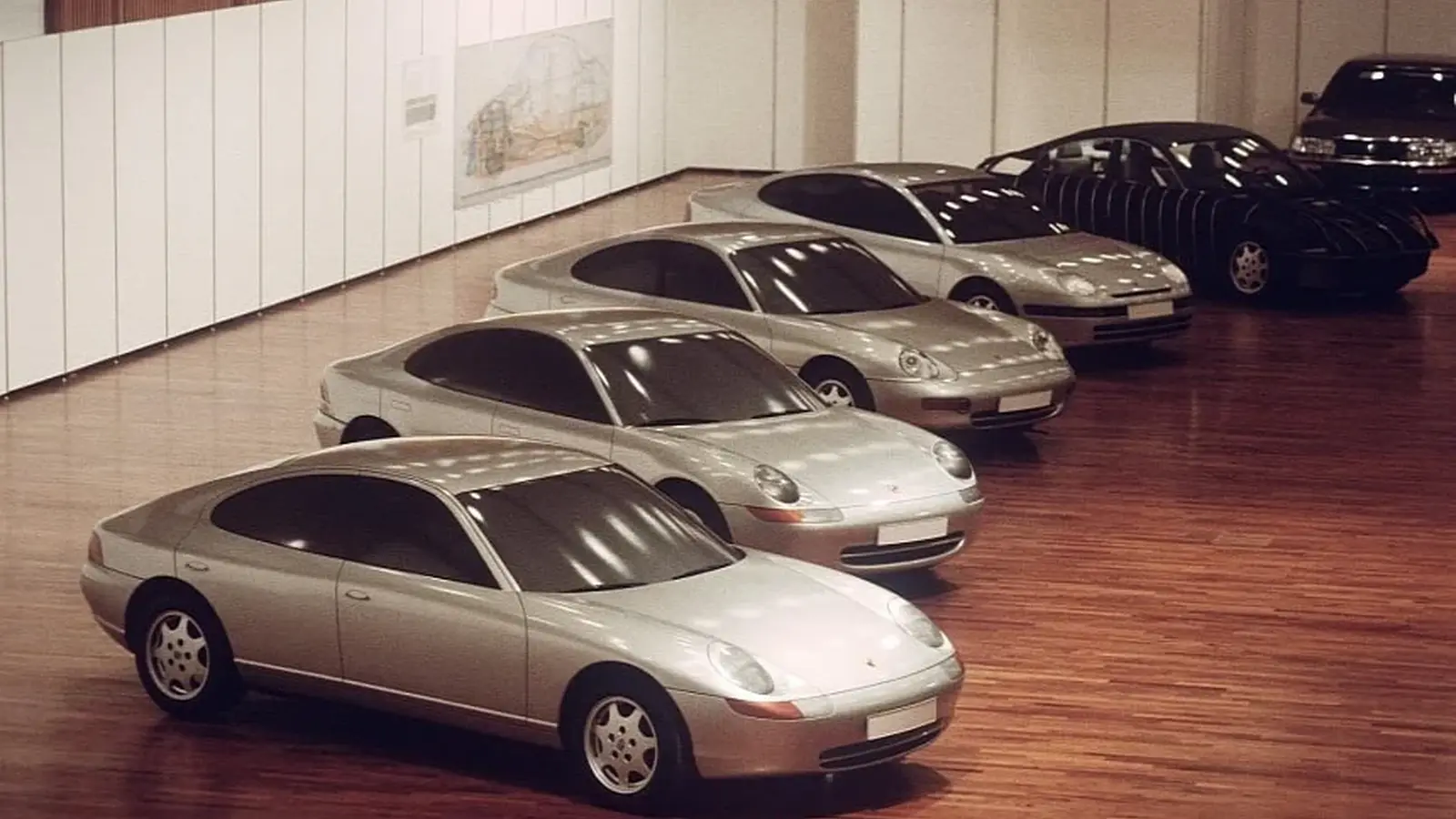
Leave a Comment